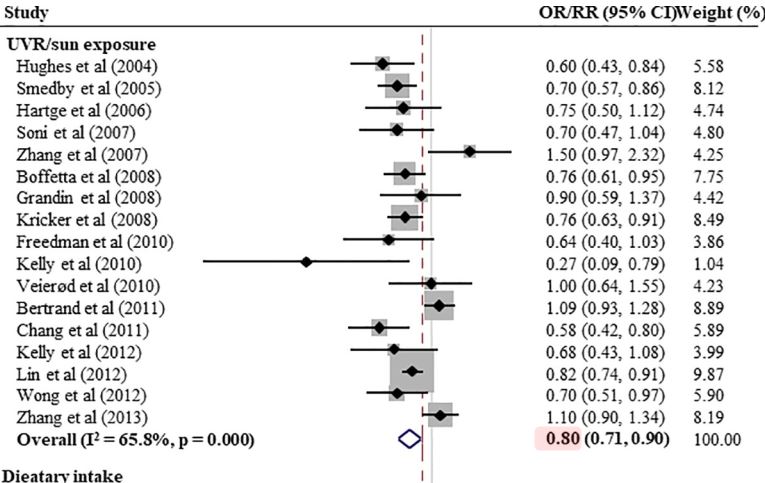Non-Hodgkin Lymphoma 20 percent more likely if low UV – meta-analysis
Vitamin D status and risk of non-Hodgkin lymphoma: An updated meta-analysis
Hye Yin Park , Yun-Chul Hong, Kyoungho Lee, Jaewoo Koh, https://doi.org/10.1371/journal.pone.0216284
📄 Download the PDF from VitaminDWiki

This meta-analysis aimed to extensively investigate the association between various measures of vitamin D status and non-Hodgkin lymphoma (NHL) and its subtypes.
Methods: We searched MEDLINE (PubMed), Embase, and the Cochrane Library in February 2018. Two authors independently reviewed and selected articles based on predetermined criteria.
Results
A total of 30 studies with 56,458 NHL cases were finally selected, with 24, 9, and 3 studies on sunlight/ultraviolet radiation (UVR) exposure, dietary intake, and serum/plasma 25-hydroxyvitamin D levels, respectively. Significant protective effects of overall sunlight/UVR exposure on NHL and subtypes were observed, with summary relative risks (RRs) ranging from 0.67–0.80 (RR for NHL = 0.80 ; 95% confidence interval [CI]: 0.71–0.90) among subjects with high exposure compared to those with low exposure. The results were consistent with various classifications of sunlight/UVR exposure. In contrast, when exposure measures of dietary vitamin D intake (RR for NHL = 1.03; 95% CI: 0.90–1.19) and serum/plasma 25-hydroxyvitamin D levels (RR for NHL = 0.97; 95% CI: 0.82–1.15) were used, risk estimates were inconsistent or non-significant for NHL and the subtypes.
Conclusion
While risk estimates varied by different measures of vitamin D status, a protective effect of sunlight/UVR exposure on NHL incidence was verified, across most of the tested subtypes as well as exposure categories.
Non-Hodgkin's lymphoma occurs when your lymphocytes don't die
Normally, lymphocytes go through a predictable life cycle. Old lymphocytes die, and your body creates new ones to replace them.
In non-Hodgkin's lymphoma, your lymphocytes don't die, and your body keeps creating new ones. This oversupply of lymphocytes crowds into your lymph nodes, causing them to swell. Mayo Clinic
